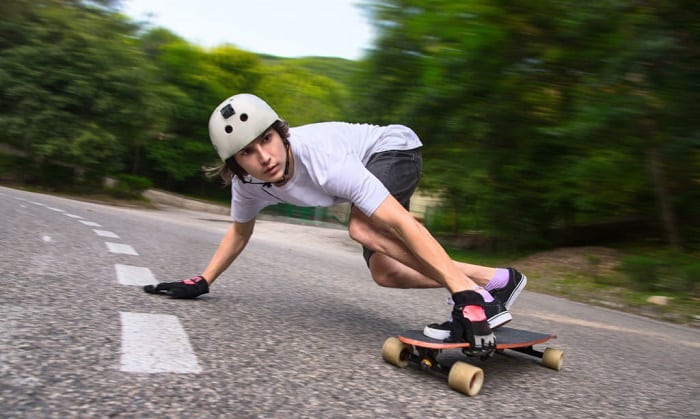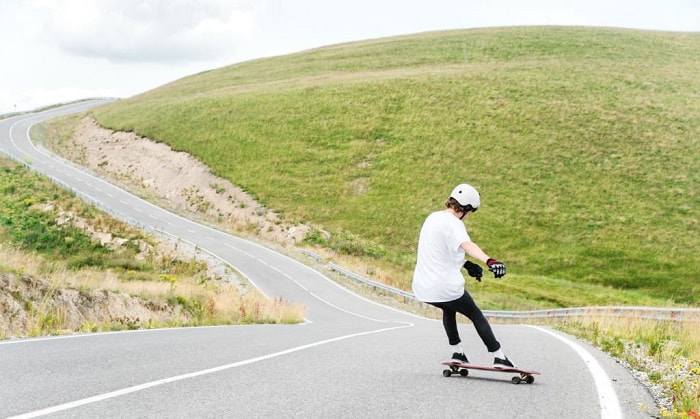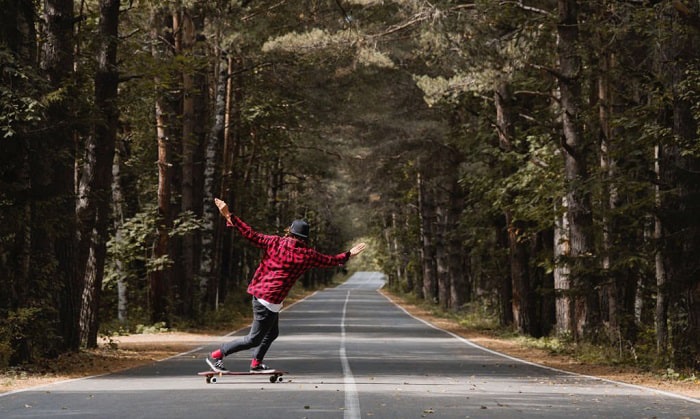If you have ever witnessed someone slide on a longboard and wondered whether you could do it too, absolutely yes! On a longboard, anyone can learn to slide. All that is required is mastery of a few fundamental movements and body postures.
Attempting how to slide on a longboard may be nerve-wracking and extremely difficult. It’s an all-in gamble in the sense that if you put in a lot of effort, you will succeed. If you do not, you will very certainly fall or will fail to begin a slide at all. Continue reading for tips on how to slide a longboard.
Table of Contents
What You Need
Sliding on a longboard requires both speed and dedication. That is why it is critical to use protective gear prior to going for it.
Here are some longboard sliding tips before going out and skating:
- Parking lots are ideal locations for learning.
- Once you’ve mastered simple slides, you may go to mild slopes; nevertheless, throughout the learning phase, stick to flat surfaces.
- Because you are likely to fall since you are new at learning, avoid spaces with broken asphalt, stones, or glass.
Common Slide Techniques
1. Pendulum Slide
A pendulum slide is a hands-down slide in which you will swing side to side. It’s an excellent method to slow down when traveling quickly and is frequently the first slide a newbie learns. It entails the use of the shoulders to assist in steering the board in the desired direction.
By swiveling your shoulders left or right, you may swing the board in the direction you want. Swinging your shoulders back also aids in regaining traction, allowing you to roll away and continue down the slope.
2. Coleman Slide
To do the Coleman Slide, push at least 5 to 8 times to begin moving. Your feet should be shoulder width apart or somewhat broader. The wider the stance, the more stable it is and the lower your center of gravity.
Bend your knees and stoop slightly. Begin shifting your weight to your front foot. As your weight moves, roll your rear foot towards the front.
Extend your front hand out into the road in front of you and to the side while maintaining a forward posture. Avoid reversing your position backwards or you may lose your equilibrium.
As you engage the slide, stretch out slightly to drive the board forward and rely on your hand to assist with balance. Maintain your weight on that front leg and your hand, then swing your free hand across your torso to initiate and complete the slide. This action essentially “drives” the slide. With your hips, go through the motion.
Simply lower your arm to disengage. Alternatively, you can continue the motion to create a complete 180-degree turn on the slide longboards. Focus your vision towards the front.
3. Pre-Drift Slide
A pre-drift is a sort of hands-down slide performed prior to approaching a curve. It enables you to decelerate sufficiently to safely take the turn without understeering into the opposite lane or off the road. It’s a common technique in racing and is beneficial for skating open routes securely.
To predrift, you move the board normally but at an angle less than 90°. This angle is measured in relation to the road. Assume the road is a straight line and your slide meets it at an angle. Sliding at a lower angle than 90 degrees allows your wheels to spin throughout the slide, guaranteeing uniform wear and superior braking capabilities.
When you slide at a 90-degree angle, the wheels do not spin. The majority of the sliding will occur on one side of the wheel. This will wear down only that part of the wheel, leaving the remainder undisturbed. If you continue sliding at a 90° angle, your wheels may develop an oval shape or, in the worst-case scenario, flat-spotting — when the worn side goes completely flat.
Finally, sliding with your hands behind your heels is referred to as a heelside or frontside slide. When you slide with your hands behind your toes or with your back to the slope, this is referred to as a toeside or backside slide in slide longboarding.
4. Stand Up & Squat Slides
Stand up slides are essentially identical to the pre-drift slides described above. However, you do not place a hand on the ground this time. You force the wheels to lose traction by carving aggressively and pushing your board out. Then, as your board slides across the pavement, you balance on it.
You adjust your weight to restore traction and allow the board to grip, allowing you to roll away.
Stand up slides are the most beautiful kind of sliding, but they are also the most difficult and dangerous to execute. Having said that, if you set up your board properly and adhere to a few fundamental principles, they are not difficult to execute, even at greater speeds.
Sit down slides are a variant of stand up slides, except that you sit on your sliding longboard or attempt to get as low as possible while sliding. They are performed in a manner quite similar to stand up slides. They are rather simple to do if you have a strong squat and are comfortable squatting on your board.
More Tips for Sliding
- Keep your hand close; if you stretch out too far, you will fall through. This is the fundamental logic of balance.
- Maintain a wide stance with each try. Bear in mind that your front foot should remain heavy, while your rear foot should be light to allow those wheels to be pushed out.
- Bear in mind that you must totally commit to the slide or the situation can get hazardous.
Conclusion
The most skilled skaters can control their slide to the point where they can carry it into or out of a sharp turn. This reduces their speed and enables them to make more precise maneuvers.
This technique may be utilized as a freeride maneuver to ride the switch; however, it is difficult for beginners. Now you understand how to slide a longboard. Avoid this by sliding at a slower speed and truly getting a feel for the board. It’s just a matter of determining when your board will engage the slide and when traction will re-engage. You can watch a longboard slide tutorial to get a visual example.

Hi, I am Charles Harris. I opened this site to write as much as I can about my biggest passion – skateboarding!
I started as a clumsy yet passionate rookie 10 years ago to now a still passionate yet much better skateboarder! But I have to tell you, the whole journey has always been fun and rewarding, indeed not without hardship.




